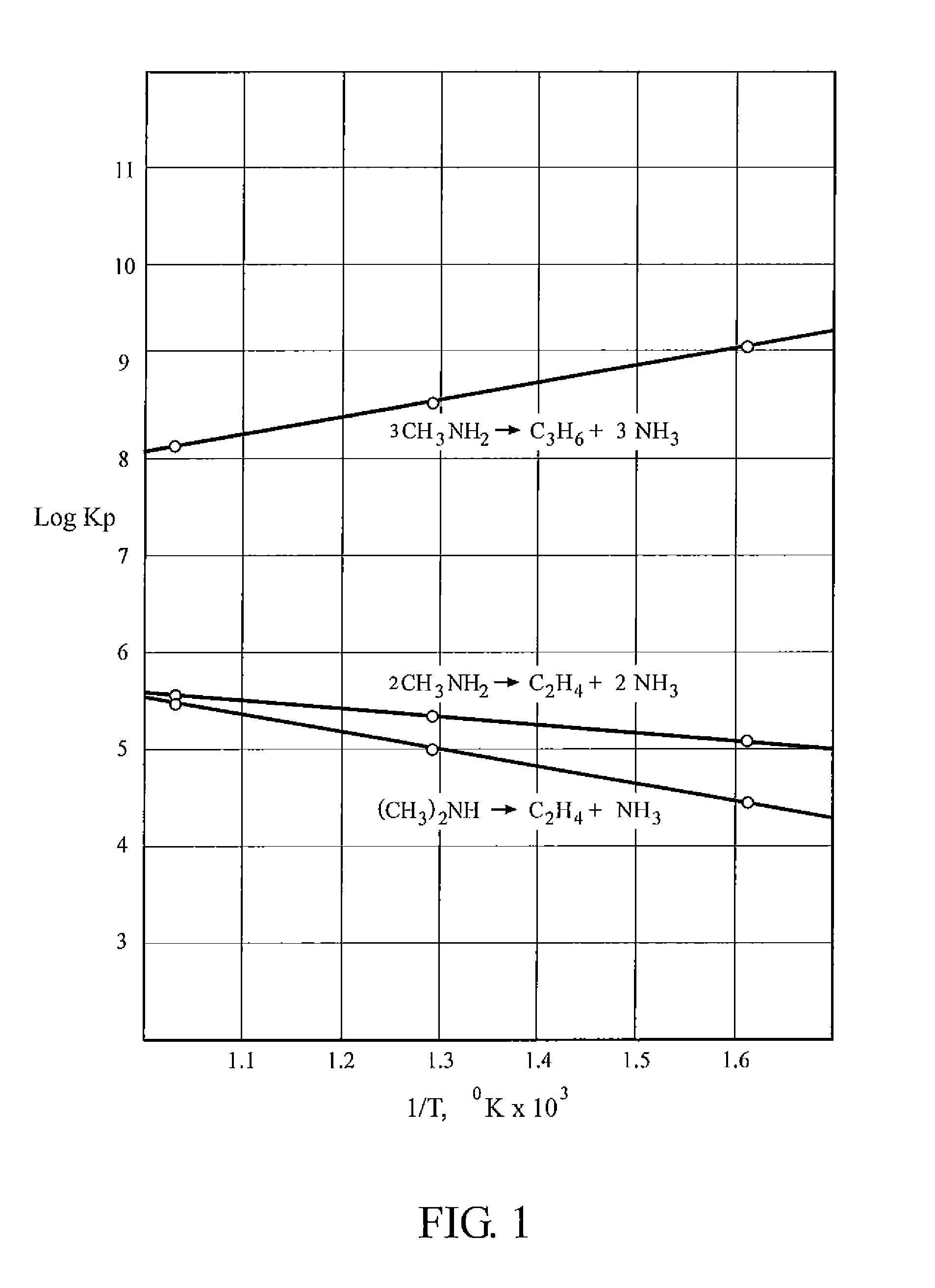Methyl amines to olefins
- Summary
- Abstract
- Description
- Claims
- Application Information
AI Technical Summary
Problems solved by technology
Method used
Image
Examples
Embodiment Construction
[0012]The process of the present invention comprises several chemical reactions whereby monomethyl amine CH3NH2, methyl amine (CH3)2NH, and trimethyl amine (CH3)3N are condensed to form an olefin plus ammonia NH3. The olefins may include ethylene C2H4, propylene C3H4 and butene C4H8. In addition, some higher olefins will inevitably be formed. By adjusting the reaction conditions, the ratios of the various olefins can be shifted within broad ranges.
[0013]Representative reactions of the process are shown by the following equations.
CH3NH2→C2H4+2 NH3 (1)
3 CH3NH2→C3H6+3 NH3 (2)
(CH3)2NH→C2H4+NH3 (3)
[0014]This group of reactions is not meant to be complete. For example, monomethyl amine can also form butene, and trimethyl amine can form ethylene. Which reactions take place will depend in part on the raw materials used.
[0015]Although pure monomethyl amine may be the reactant, more likely a mixture of methyl amines will be employed. Methyl amines are commonly produced by the reaction of m...
PUM
| Property | Measurement | Unit |
|---|---|---|
| Temperature | aaaaa | aaaaa |
| Temperature | aaaaa | aaaaa |
Abstract
Description
Claims
Application Information
 Login to View More
Login to View More - R&D Engineer
- R&D Manager
- IP Professional
- Industry Leading Data Capabilities
- Powerful AI technology
- Patent DNA Extraction
Browse by: Latest US Patents, China's latest patents, Technical Efficacy Thesaurus, Application Domain, Technology Topic, Popular Technical Reports.
© 2024 PatSnap. All rights reserved.Legal|Privacy policy|Modern Slavery Act Transparency Statement|Sitemap|About US| Contact US: help@patsnap.com








